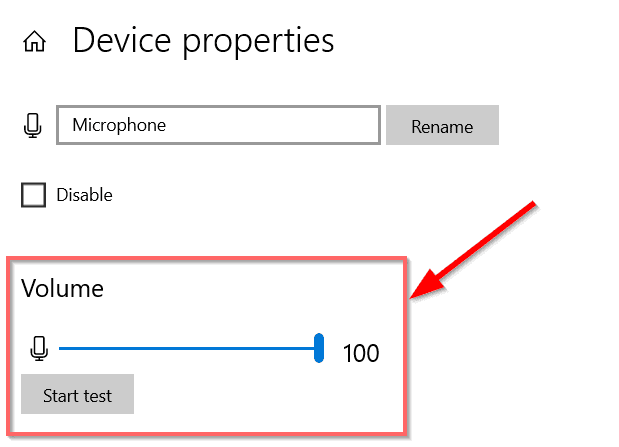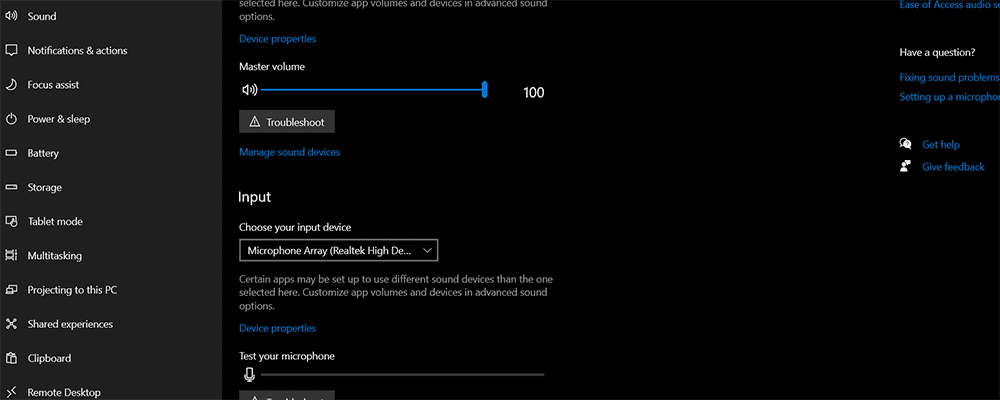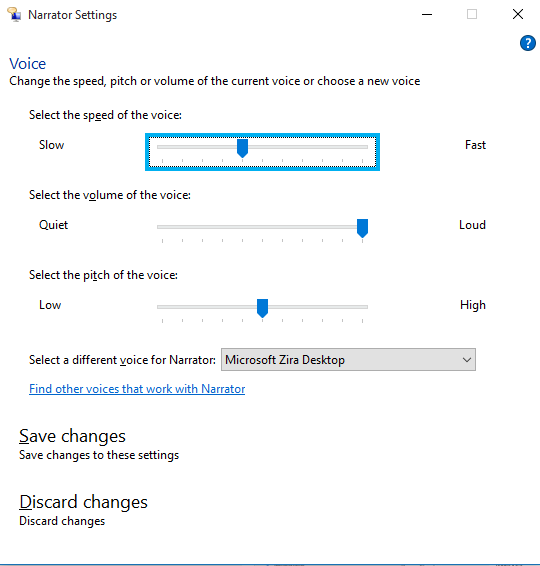
- WINDOWS 10 VOICES QUIET INSTALL
- WINDOWS 10 VOICES QUIET UPDATE
- WINDOWS 10 VOICES QUIET WINDOWS 10
- WINDOWS 10 VOICES QUIET SOFTWARE
- WINDOWS 10 VOICES QUIET WINDOWS
WINDOWS 10 VOICES QUIET WINDOWS
Restart Windows after updating the driver.
WINDOWS 10 VOICES QUIET UPDATE
Select to download an update audio driver that’s compatible with your 32 or 64-bit Windows platform.Īdd the update audio driver to Windows by opening the folder you saved it to and launching its setup wizard. Open the website of the manufacturer listed on the General tab shown directly above.Ĭlick a Download hyperlink on the site or enter your sound card in a driver search box to find a compatible audio driver. Right-click the sound card listed in Device Manager and select Properties to open the window. Reboot your laptop or desktop if Windows updates the driver.Įven if Windows doesn’t update the driver, you might still find a more update driver on the sound card manufacturer’s website.
WINDOWS 10 VOICES QUIET SOFTWARE
Right-click the listed sound card and select Update driver.Ĭlick Search automatically for updated driver software to automatically update the audio driver. Open the Win + X menu with the Win + X hotkey.Ĭlick Device Manager to open the Device Manager window.ĭouble-click Sound, video and game controllers to expand its pertinent devices. This is how you can update an audio driver in Windows 10: Updating an antiquated sound card driver can resolve numerous audio issues. May your sound card’s driver needs updating.

a few minutes, and right-click the disabled sound controller and select Enable. Press the Yes button on the dialog box window to confirm the selected option. Right-click your active sound controller and select Disable device. Select Device Manager on the Win + X menu.ĭouble-click Sound, video and game controllers to expand the list of audio devices You can restart the sound controller (or card) by pressing the Win key + X hotkey to open the Win + X menu. Restarting the sound controller might help resolve volume that’s too low in Windows. Then right-click your default speakers and select Properties to open the window and then, Select the Enhancements tab > Select the Loudness Equalization option.Ĭlick the Apply and OK buttons to close the window. Right-click the speaker system tray icon and select Playback devices. This option ensures more consistent volume across all programs, which will increase the average audio level.

The Loudness Equalization setting can make a difference. If the volume level is inconsistent in Windows, some software sound will be somewhat lower than what it could be.
WINDOWS 10 VOICES QUIET INSTALL
Thoroughly research any product advertised on the site before you decide to download and install it. Watch out for ads on the site that may advertise products frequently classified as a PUP (Potentially Unwanted Products). The page appears to be providing accurate, safe information. Right-click the one that needs to be the default playback device and select Set as Default Device.

That will open the window directly below that lists playback devices. You can do that by right-clicking the speaker icon on the system tray and selecting Playback devices. If you have multiple playback devices, check the one you need sound on is the default device. If the troubleshooter fixes something, you might also need to restart Windows for the changes to take effect. Then the troubleshooter might detect and fix the audio issue. Select the listed Playing Audio troubleshooter, and press the Run the troubleshooter button to open the window.
WINDOWS 10 VOICES QUIET WINDOWS 10
Windows 10 includes the Playing Audio troubleshooter that can resolve numerous volume issuesĬlick the Cortana button to open Windows 10’s search box.Įnter the keyword ‘troubleshooter’ in the search box.Ĭlick Troubleshoot to open the Settings window If you’ve increased all the volume controls and the sound is still too low, open the Playing Audio troubleshooter. Then you can raise the audio slider for third-party software open on the task bar if the volume is too low. Right-click the speaker icon on the system tray and select Open Volume Mixer to open the window directly below. There are usually other volume controls that will override the Windows 10 speaker.

I'm Diego Rios, an Independent Advisor willing to help other Microsoft customers.įirst, check every volume control for programs.


 0 kommentar(er)
0 kommentar(er)
